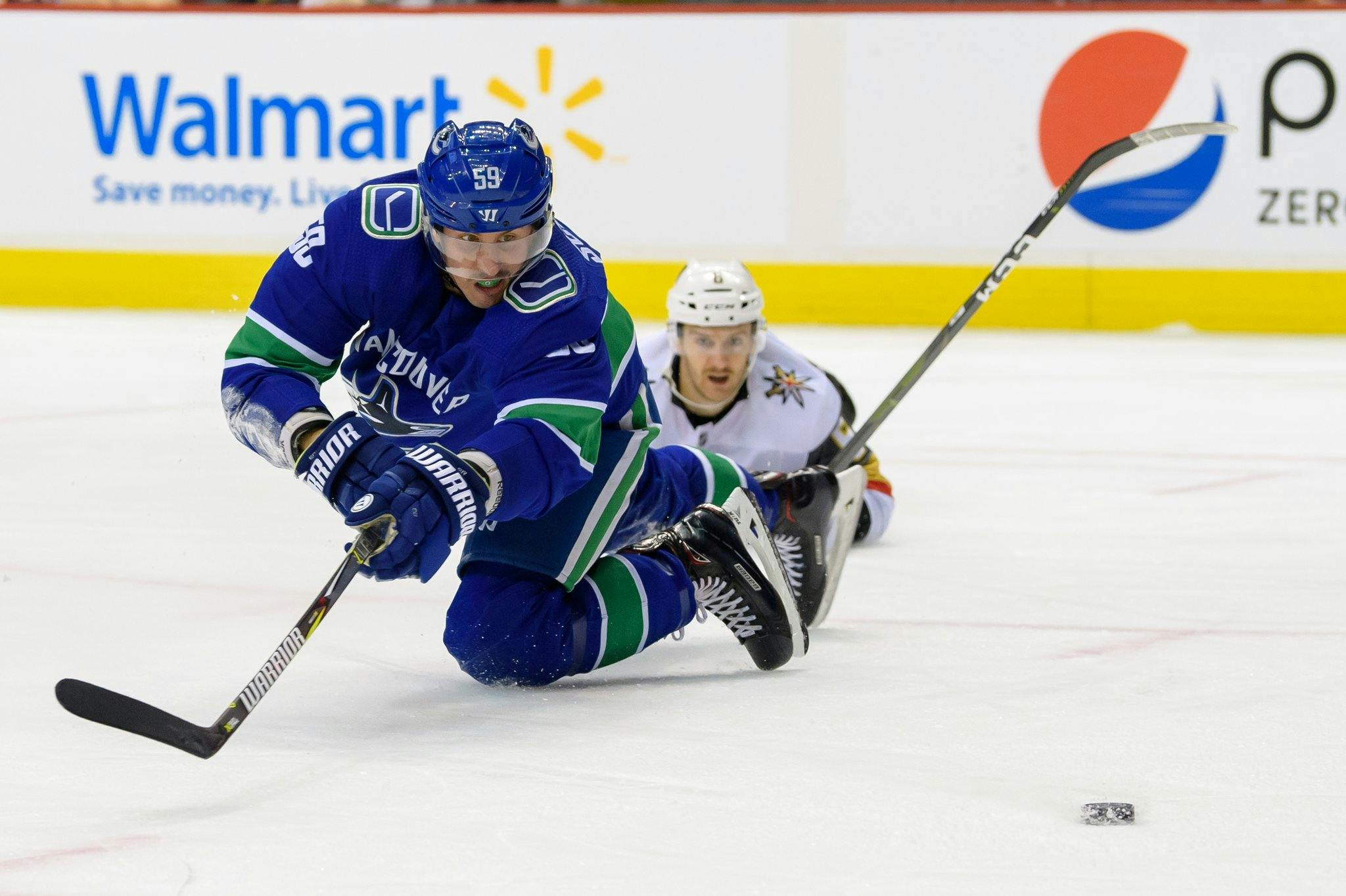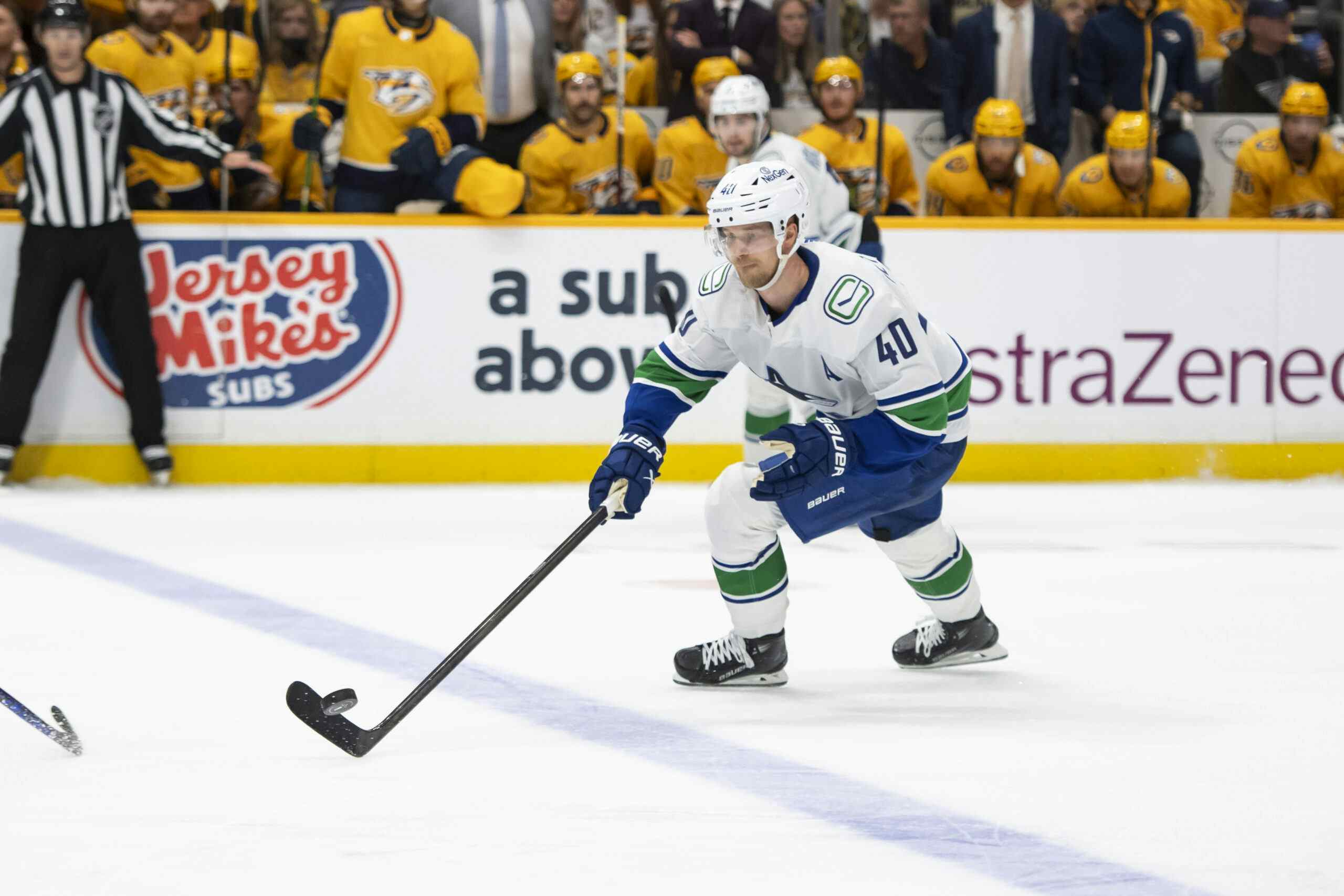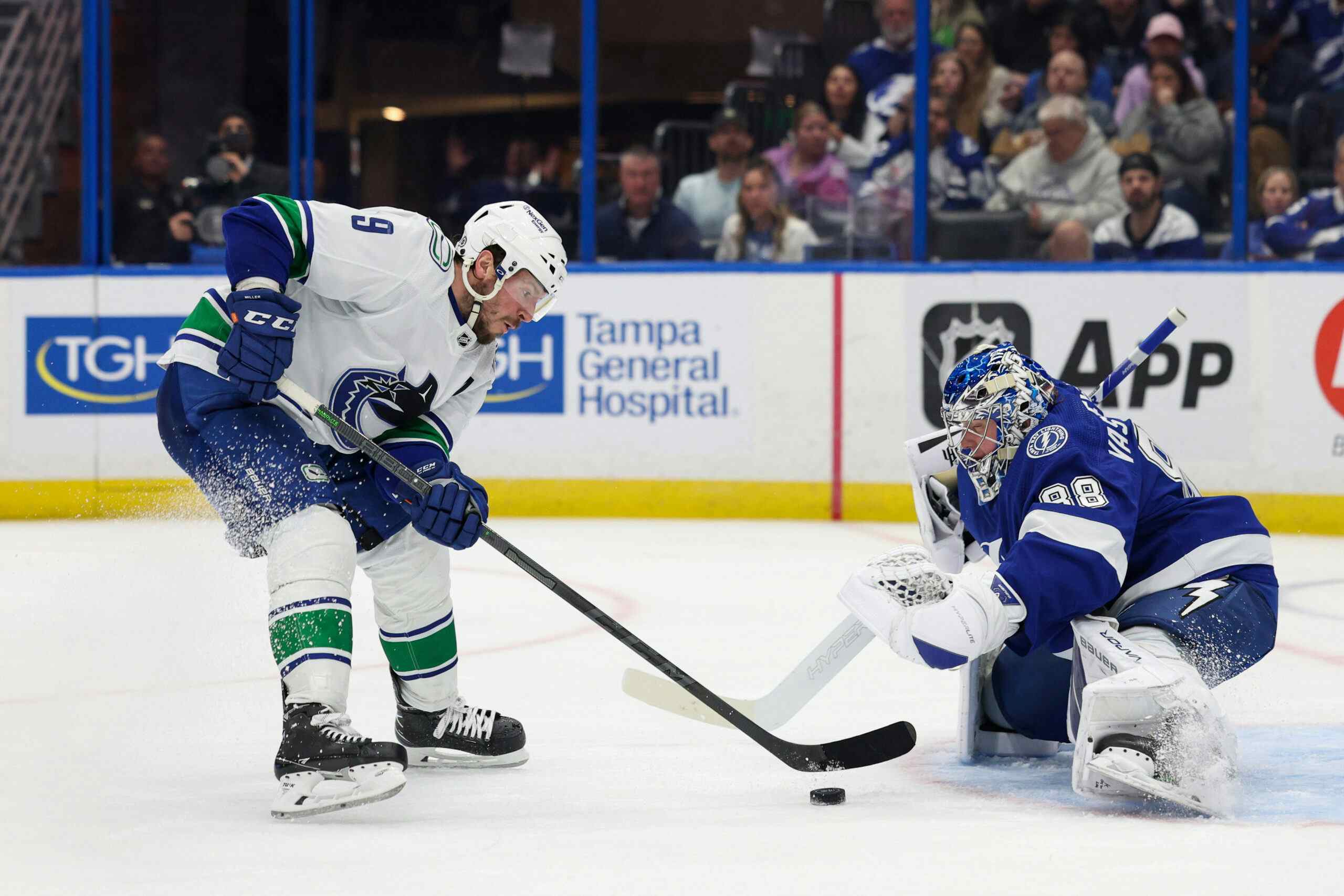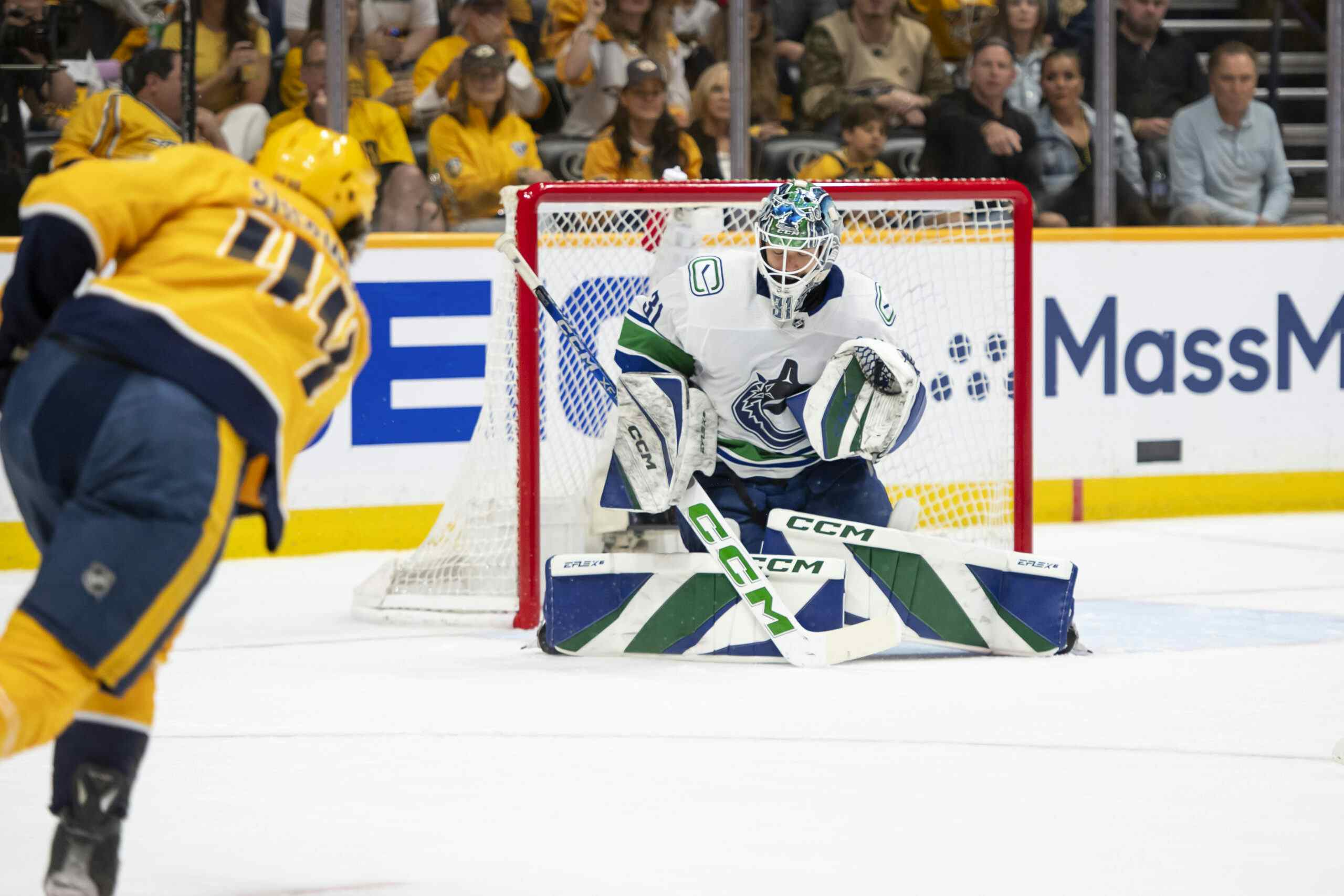What The Heck Happened To Tim Schaller?

Count this author in as one of the few in the Vancouver fanbase who were actually excited about the signing of Tim Schaller in the summer of 2018. While that opinion has aged about as gracefully as Keith Tkachuk, there was once plenty of reason for optimism.
When he signed with the Canucks, Schaller was coming off a career season in which he put up 22 points in 82 games. While those are respectable numbers for a fourth liner, the real reason this author and a handful of others were overjoyed with the signing of Schaller was the reaction of the online Boston Bruins community to his departure.
To hear Boston fans tell it, Schaller was a heart-and-soul player, a fan favourite, and the driving engine behind their team’s internal motivation. Don’t take our word for it, let’s head to the Twitter archives for the Bostonian reactions to Schaller’s July 1 signing with the Canucks!
Taking a glance at other social media platforms from around the time of his signing reveal even more positive takes on Schaller’s time with the Bruins, including quotes like “This one hurts more than not getting JT” and the assertion that Schaller was a premium fourth liner—“[he’s] got the speed and talent to play third line minutes but lacks the shot. Willing to play physical all the time. Wish him nothing but the best in Vancouver.”
That all serves as pretty sharp contrast to the kind of opinions being thrown around about the guy by Canuck fans after a half season in Vancouver:
All of which raises the important question of What The Heck Happened To Tim Schaller?
How exactly does one go from an energetic hustler than fans in Boston couldn’t bear to be without to a nigh-invisible entity that Vancouver fans want to drive to the airport? Below, we’ll see if we can find any answers.
Production
It is possible that Schaller’s breakout of a 2017/18 with the Bruins was an anomaly, but his overall career progression doesn’t really jive with that. It was Schaller’s fourth season in the league—and only his second as a full-time NHLer—but his production didn’t increase all that much from previous outings. In fact, Schaller’s production in 2017/18 was only a smidge higher than it was in his first season with the Bruins, suggesting he didn’t so much “breakout” as receive more of an opportunity.
| Tim Schaller | 2014/15 (Buffalo) | 2015/16 (Buffalo) | 2016/17 (Boston) | 2017/18 (Boston) | 2018/19 (Vancouver |
| Games | 18 | 17 | 59 | 82 | 34 |
| Points | 2 | 3 | 14 | 22 | 5 |
| Points-Per-Game | 0.11 | 0.18 | 0.24 | 0.27 | 0.15 |
Perhaps, then, it is Schaller’s lack of opportunity in Vancouver that has caused his offensive output to plummet. Unfortunately, that does not appear to be the case.
Opportunity
Tim Schaller is definitely getting less of an opportunity to play hockey in Vancouver than he did in Boston last year—especially when his numerous healthy scratches are entered into the equation—but not to such a degree that it would explain his poor performance.
| Tim Schaller | 2014/15 (Buffalo) | 2015/16 (Buffalo) | 2016/17 (Boston) | 2017/18 (Boston) | 2018/19 (Vancouver |
| Average TOI | 10:16 | 7:08 | 10:42 | 11:18 | 9:31 |
| Average Shift Length | 0:42 | 0:38 | 0:42 | 0:43 | 0:40 |
| Average Shorthanded TOI | 1:02 | 1:11 | 1:08 | 1:53 | 1:46 |
For the most part, Schaller is playing close to the same amount of minutes in Vancouver—in the same sort of situations—as he did in Boston over the past two seasons.
The numbers look even more damning when broken down on a month-by-month basis.
| Tim Schaller | First Month In Vancouver | Since Then |
| Games | 13 | 21 |
| Average TOI | 11:18 | 8:25 |
| Average Shift Length | 0:39 | 0:40 |
| Average Shorthanded TOI | 2:24 | 1:22 |
This chart demonstrates that when Schaller first joined the Canucks, coach Travis Green gave him just as much opportunity on the ice as he was receiving in Boston. It was only after a month of play that Green began to decrease Schaller’s minutes—and by that point, Schaller had certainly given him ample reason to make that decision.
Quality Of Teammates/Competition
There’s little doubt that the two Bruins rosters that Tim Schaller played on—both of whom made the playoffs—were better overall hockey teams than the 2018/19 Canucks are.
However, that doesn’t mean that the actual players who Schaller currently lines up with—or against—are of any different quality than what he dealt with in Boston.
Again, the numbers back up this assertion. By measuring the Time on Ice Percentage of Schaller’s linemates and opponents, one can come up with his TOI% Quality of Teammates and TOI% Quality of Competition stats—which are meant to reflect how good the players he shares the ice with are on either side of the puck.
| Tim Schaller | 2016/17 (Boston) | 2017/18 (Boston) | 2018/19 (Vancouver) |
| TOI% QoT | 28.95% | 28.64% | 29.06% |
| TOI% QoC | 28.44% | 28.4% | 28.67% |
These stats seem to indicate that Schaller is currently dealing with teammate and competition quality similar to his assignment in Boston, but he’s still struggling.
Such numbers, however, may be flawed. This statistic being so heavily based on icetime may be a mitigating factor, as a player of lesser quality in Vancouver may receive equal minutes to what a better player might receive on a deeper roster. By looking at the average Corsi For % of Schaller’s linemates, one can finally find a possible answer for his decline in Vancouver.
| Tim Schaller | 2016/17 (Boston) | 2017/18 (Boston) | 2018/19 (Vancouver) |
| Corsi For % QoT | 53.4% | 51.34% | 45.47% |
This would seem to indicate that the quality of Schaller’s teammates in Vancouver is holding him back a bit compared to the support he received in Boston. That tracks logically, too, with the Bruins of the past two seasons having objectively deeper rosters than the current Canucks.
However, an actual look at the most frequent linemates of Schaller in Boston—Sean Kuraly, Noel Acciari, Brian Gionta, Tommy Wingels, Austin Czarnik, and the like—versus those he’s lining up with in Vancouver—Markus Granlund, Jay Beagle, Antoine Roussel, and Tyler Motte—reveals that the difference isn’t all that pronounced.
Luck
As a low-volume shooter, it’s tough to use Shooting Percentage to perform any sort of assessment on Tim Schaller. With a whopping zero goals on the season, he’s obviously shooting blanks in 2018/19—but his percentage has traditionally been pretty low anyway, and he’s been shooting at an even lower volume than usual.
| Tim Schaller | 2016/17 (Boston) | 2017/18 (Boston) | 2018/19 (Vancouver) |
| Shots Per Game | 1.51 | 1.61 | 0.94 |
| Shooting Percentage | 7.9% | 9% | 0% |
There’s obviously some bad luck involved in Schaller literally rocking a 0.00% in this category, but sometimes individuals make their own luck. Schaller hasn’t been doing much to help himself in this department.
Intangible Factors And The “Eye Test”
It’s become quite clear that Schaller had something in Boston that he does not have in Vancouver—his coach’s trust. Both Claude Julien and Bruce Cassidy found enormous value in having Schaller in their lineup, but Travis Green obviously feels differently. There’s no way to know what expectations Green has communicated to Schaller, but he doesn’t appear to be meeting them.
However, proponents of the “eye test” will have a hard time faulting Green in this regard. Whereas Bruins fans decried the loss of a “hustler” with “non-stop energy” in July, that version of Tim Schaller simply hasn’t shown up in Vancouver. Schaller often looks listless on the ice—when he’s even noticeable at all—and certainly hasn’t appeared to play in any manner that could theoretically give his team energy. Instead, Tyler Motte is filling that role this season, and Schaller is nowhere to be found.
Conclusion
The fact of the matter is that Schaller simply looks like a different player than he was in Boston. While there are many factors that could explain why Schaller is performing so much worse in Vancouver, none of them appear to offer definitive answers.
The best conclusion to the query of “What The Heck Happened To Tim Schaller?” is probably a narrative one. He came to Vancouver, struggled to fit in with his new teammates and system, performed poorly, lost his coach’s trust, and hasn’t been able to right the ship. Schaller has received plenty of opportunity with the Canucks, but he’s done a whole lot less with it than he has in previous NHL seasons—and the results speak for themselves.
Recent articles from Stephan Roget





